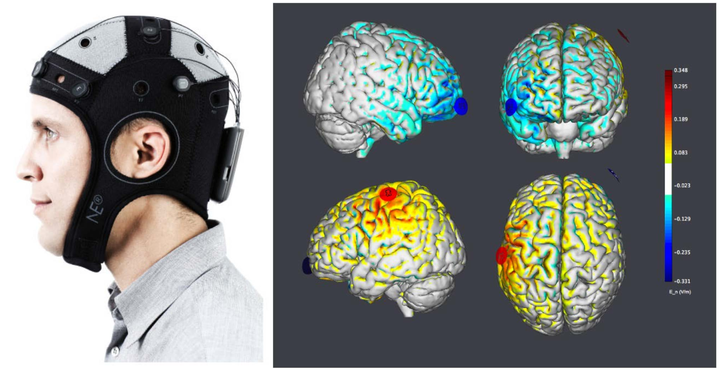Transcranial direct current stimulation in chronic spinal cord injury: quantitative EEG study

Abstract
Background: Existing strategies to enhance motor function following Spinal Cord Injury (SCI) are suboptimal leaving patients with considerable disability. Available evidence suggests that transcranial direct current stimulation (tDCS) is a promising method to improve motor dysfunction. How tDCS affects resting brain activity monitored by EEG is little explored.
Methods: We conducted a randomized, single blind, sham controlled, cross-over study in seven chronic SCI subjects with cervical lesions. We investigated the effects of 20-minute anodal tDCS applied over the left primary motor cortex (M1) on electroencephalography (EEG) power spectrum density, coherence and frequency band power. Subjects were randomized to receive either 1 mA or sham stimulation. The EEG data acquisition pre and post stimulation comprised 5-minute takes of 24 bit, 500 S/s 8-channel EEG using StarStim Ag/AgCl EEG electrodes (at F3, F4, Cz, C4, P3 and P4; and Pi Ag/AgCl electrodes at C3, anode, AF8, return).
Results: In comparison to sham stimulation, 20-minutes of active 1 mA tDCS induced a pattern of faster activity around the anodal stimulating electrode, and slowing activity near the return electrode in the frequency (full band) and mean power domain (gamma band). In addition, tDCS increased coherence in the fastest bands (gamma, beta 2) and decreased coherence in slower frequency bands (theta, SMR), with no relation with brain topography or the stimulation electrode polarity.
Conclusions: These findings show that tDCS is capable of inducing modulation of ongoing oscillatory brain rhythms captured by EEG, in spinal cord injury patients. The combined use of EEG and tDCS sets the stage for optimizing tDCS protocols targeting motor cortex and may have application in treatment of motor dysfunction and chronic pain.